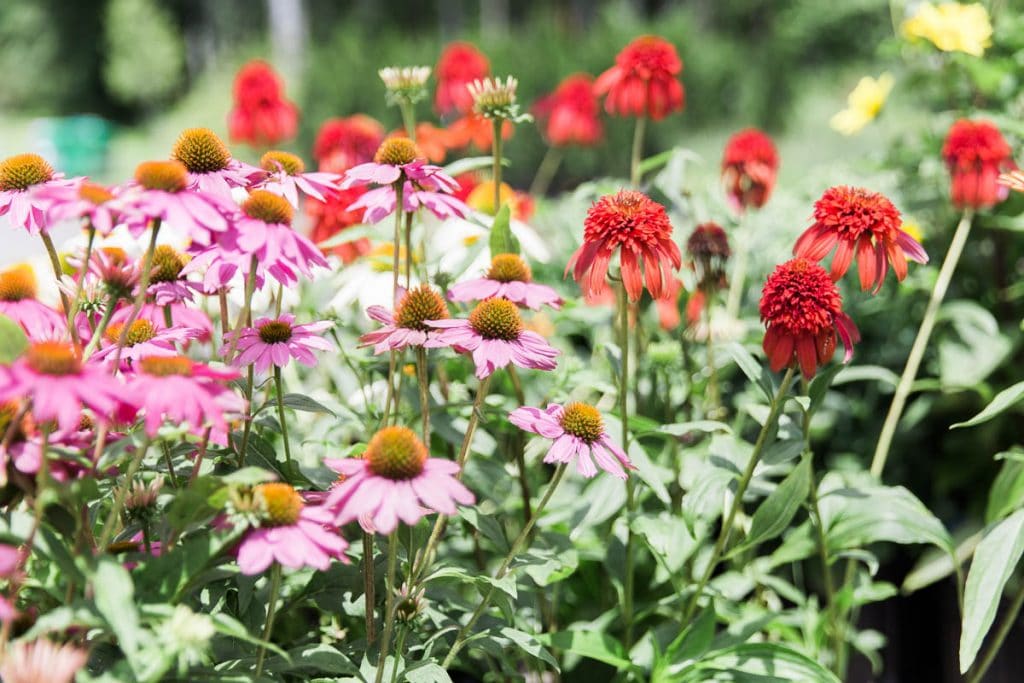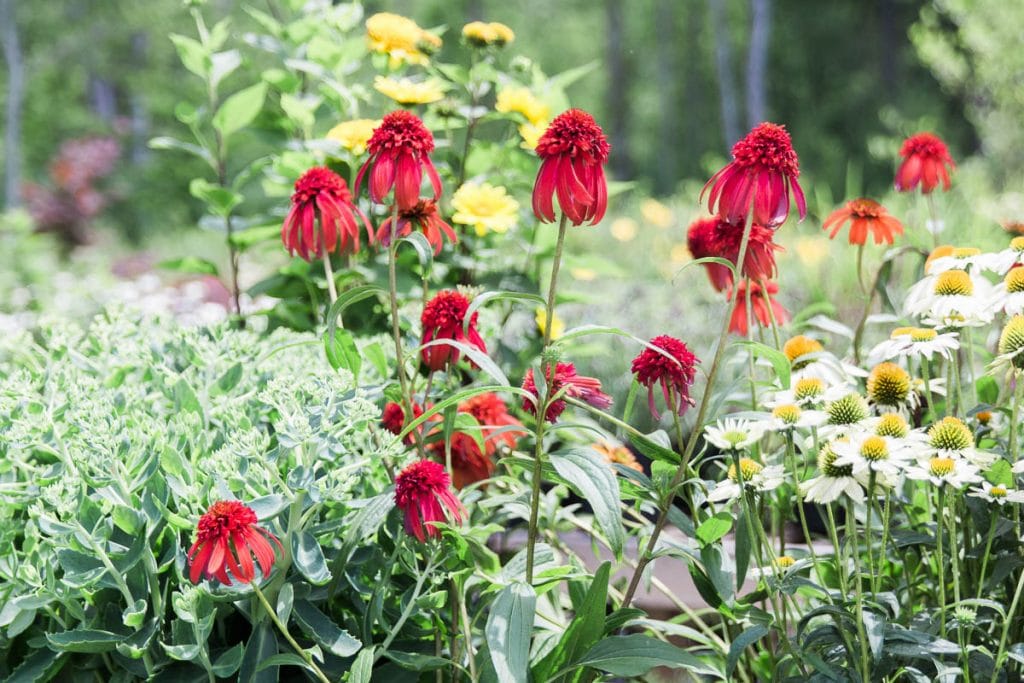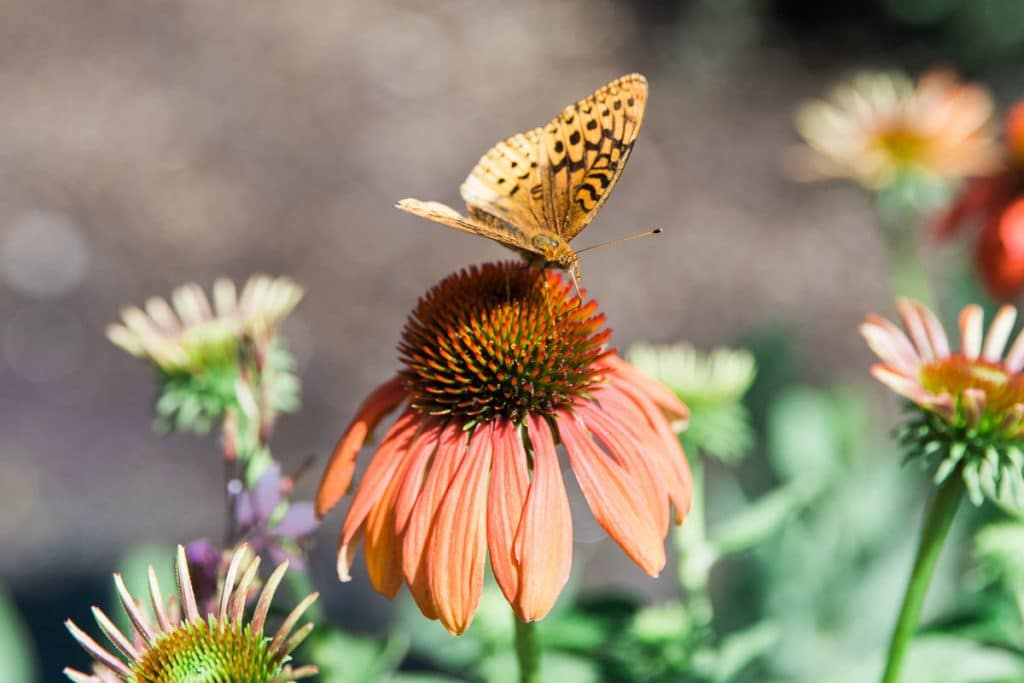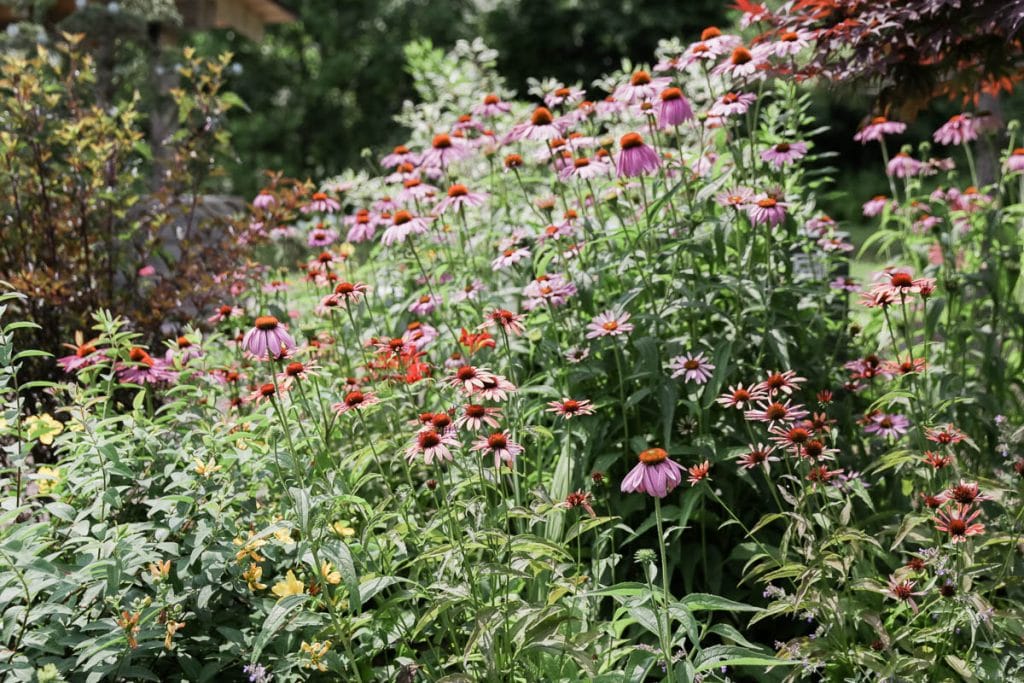
Hardiness Zones: Zones 3 – 9
Common Varieties: Purpurea (“Purple Coneflower” – not always purple!), tennesseensis (“Tennessee Coneflower”),
Colors: Mostly light, warm purple, but also hot pink, red, orange, yellow, white, and even green and dark purple, or multicolored.
Echinacea is the genus name for a whole gaggle of flowers that we commonly called coneflower. The word echinacea comes from the Latin word for hedgehog, referring to this perennial’s distinctive spiny center. These flowers are truly natives, originating in the vast American prairies and growing from Maine to Louisiana and Iowa to the east coast. Valued for their drought-tolerance and long bloom period, these bright flowers are perfectly at home in any Hudson Valley garden.
Coneflowers’ upright stems can reach up to 4′ in some varieties, but they typically grow to 18″ – 2′. Each stem produces one showy flower, usually about 2″-3″ wide, sometimes with down-turned petals lending to its cone shape. The flowers are typically warm, light purple, but modern growing has produced a rainbow of shades including hot pink, red, orange, yellow, and white! They grow in clusters that can reach 24″ in width. Some ornamental varieties boast small colorful petals all over their spiny centers, making them extra bright and eye-catching!

Coneflower typically blooms in June, though some varieties can bloom in a warm May. If properly pruned throughout the season, they can bloom continuously through the summer and well into the fall – sometimes up until the first frost!
Planting
Coneflower is best planted in the spring and early summer. Since this perennial is a sun-lover, pick a spot with at least 6-8 hours of full sun per day to ensure strong stems and maximum blooms. They prefer well-drained soil. Incorporating some compost into the soil while planting is great for aiding in establishment. However, fertilizing is almost never necessary!
If you’re planting during a particularly dry spring, you may want to water your new echinacea regularly to get it established. Thereafter, these are drought-tolerant in the extreme.
Care
Coneflowers are famously low-maintenance! They tolerate drought and heat as well as colder weather, often lasting until the first frost. Some gentle pruning can help you get the most from your plant. Deadheading spent flowers throughout the season ensure continuous blooms. They can get leggy, so make sure to cut echinacea back in the early spring to keep them compact.
If you want to skip maintenance altogether, that’s fine too! Leaving the spent blooms will attract all sorts of birds snacking on those yummy seeds.
Special Features
Drought-tolerant (really, really!); low-maintenance (really, really, really!); fall interest; somewhat deer-resistant due to spiny foliage; pollinator friendly (butterflies and birds especially!)

Designing
Coneflower is a natural garden mate for other sun-loving perennials like salvia, Russian sage or caryopteris, rudbeckia, and yarrow. It’s especially striking in a mass planting with different colors. It’s also perfectly at home in a wild meadow, or a container garden on the patio.





